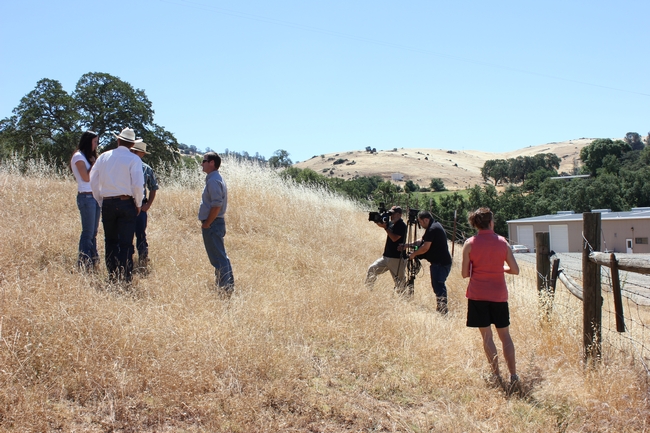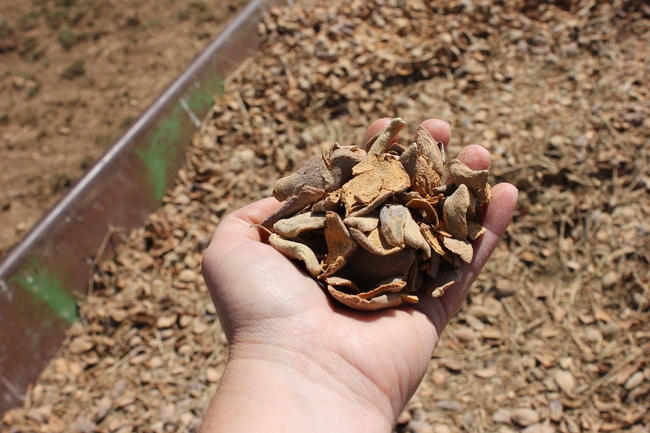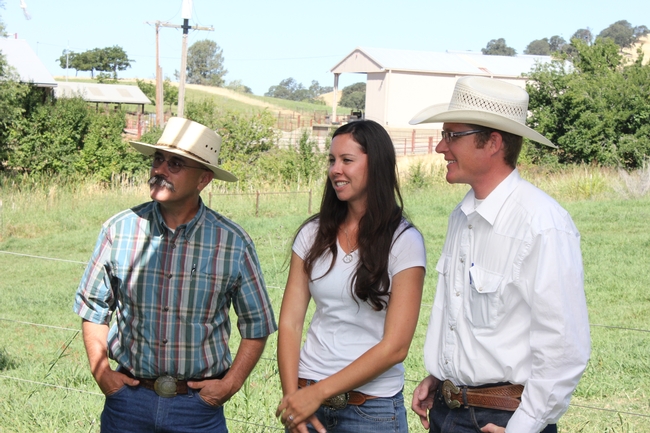
Adaptation to changing weather and economic conditions is fundamental to farm and ranch survival but this year's drought is pushing variable adaptation strategies to their limit. The international community is closely watching how this dire situation is progressing in California and on June 19th the Canadian Broadcast Company (CBC) visited the Sierra Foothill Research & Extension Center (SFREC) to document how ranchers are adapting to these extreme events and the implications these events have on agriculture and ultimately food production worldwide. Filming involved capturing interviews of three ranchers to explore their perspectives as well as a tour of SFREC to examine potential adaptation strategies to drought.
Joe Fischer, cattle rancher and President of the Placer County Farm Bureau, told CBC the economic impacts and emotional toll of the drought on ranching families have forced ranchers to rethink their management strategies and find innovative ways to manage the land. “Ranchers tend to be profitable if the land is productive,” Fischer said. “We have to look ahead five to ten years or more and try to be as conservative as possible with our stocking rates. Under these conditions, we have a much smaller margin for error so we have to be more precise than ever with our management strategies.”

SFREC Director Jeremy James and Livestock and Natural resource Advisor Glenn Nader used SFERC as an opportunity to demonstrate how intensive grazing management, agricultural by-products and culling strategies could be deployed to mitigate some of the impacts of drought. Many producers with limited feed sources are utilizing agricultural by-products that are available in their area in order to sustain the nutritional requirements of their livestock. Nader, pointed out that almond hulls are high in energy and have limited protein, which allows cows to more efficiently digest hay and can limit the quantity of hay they need to consume. Nader warned that the almond hulls fed must contain a low level of almond shell, in order to avoid problems with rumen digestibility. Rice straw and rice bran are more local agricultural by-products that, under the right conditions, have been utilized as dietary supplements for cattle.

To view the proceedings from the January 29th SFREC Drought Workshop, click here.